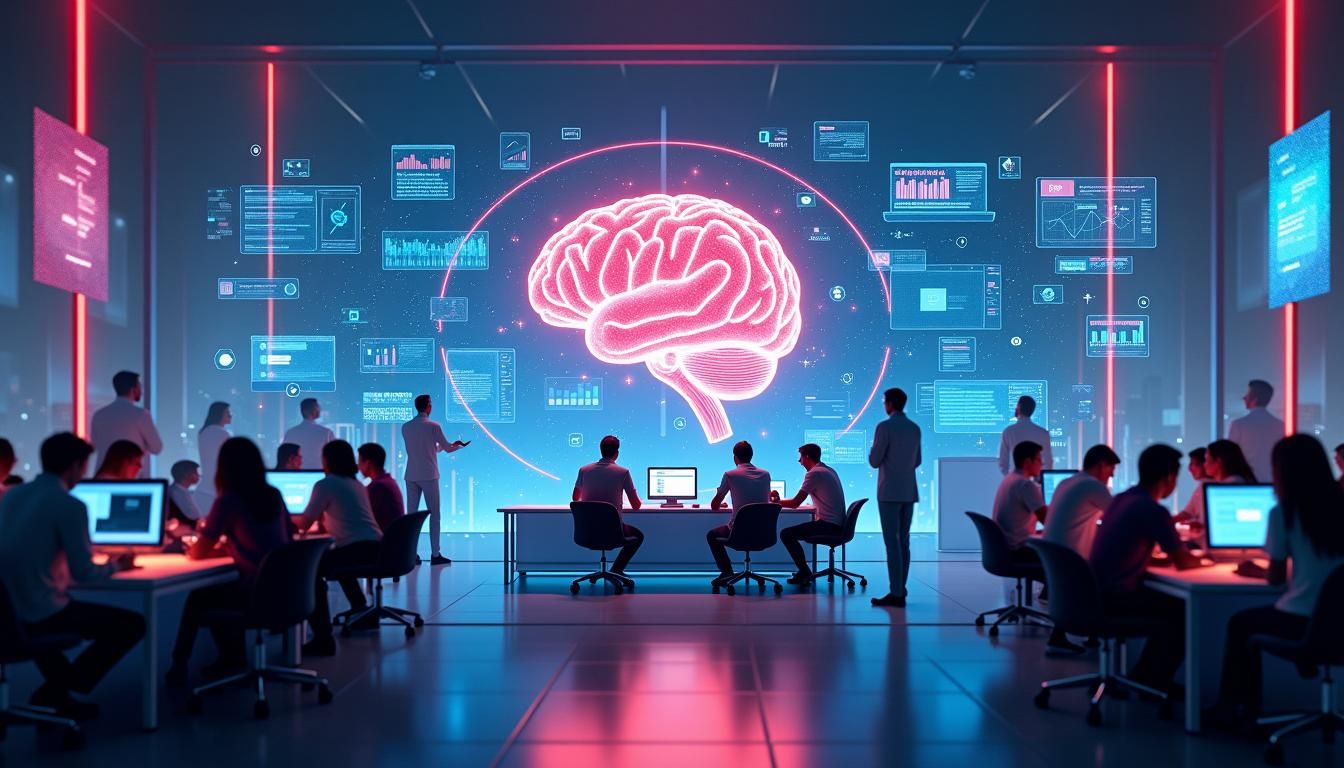As we navigate 2025, the blogging landscape is undergoing a seismic shift. Driven by advancements in artificial intelligence, evolving reader expectations, and groundbreaking technologies, content creators are redefining what it means to connect with audiences. For platforms like Aleck.ai, which specializes in AI-driven insights, understanding these trends isn’t just optional—it’s essential for staying ahead in a competitive digital ecosystem. Let’s explore the key developments shaping blogging today and how you can adapt to thrive.
1. AI-Driven Content Creation: Efficiency Meets Authenticity
Artificial Intelligence has become the backbone of modern blogging. Tools like OpenAI’s GPT-3 and Google’s BERT are revolutionizing how content is generated, optimized, and personalized:
- Automated Drafting: AI assists bloggers in brainstorming topics, drafting posts, and refining language. This reduces time spent on repetitive tasks, allowing creators to focus on strategy and creativity.
- Personalization: By analyzing reader behavior, AI tailors content recommendations to individual preferences. For instance, a tech blog might surface AI-specific articles to developers while highlighting gadget reviews for casual readers.
- SEO Optimization: AI-powered tools like SEMrush and Ahrefs identify trending keywords and gaps in content strategy, ensuring blogs rank higher in search results.
However, the human touch remains irreplaceable. Successful bloggers in 2025 are blending AI efficiency with authentic storytelling to build trust and emotional connections. As Aleck.ai emphasizes, AI is a collaborator—not a replacement—for human creativity.
2. Interactive and Multimedia Content: Beyond Static Text
Today’s audiences crave dynamic experiences. Traditional blog posts are now augmented with interactive elements:
- Quizzes and Polls: Embedded directly into articles, these tools transform passive readers into active participants. A sustainability blog might include a quiz like “How Eco-Friendly Is Your Lifestyle?” to boost engagement.
- Video Integration: Short-form clips (e.g., TikTok-style tutorials) and long-form videos (e.g., in-depth interviews) are being seamlessly woven into posts. For example, a travel blogger could embed a 360-degree video tour of a destination alongside written tips.
- Interactive Infographics: Clickable data visualizations allow readers to explore statistics relevant to their interests, such as regional climate trends or tech adoption rates.
These multimedia strategies cater to diverse learning styles, increase time spent on pages, and improve social shares—a win-win for both creators and audiences.
3. Sustainability and Ethical Blogging: Aligning with Values
Readers in 2025 increasingly prioritize sustainability and transparency. Blogs that reflect these values stand out:
- Eco-Friendly Operations: Bloggers are partnering with green hosting providers and minimizing digital carbon footprints through optimized media files and efficient coding practices.
- Ethical Partnerships: Collaborations with eco-conscious brands (e.g., reusable product lines or carbon-neutral services) resonate with audiences. Disclosing these partnerships openly builds credibility.
- Community-Driven Content: Platforms are fostering loyalty through newsletters, private forums, and social media groups. For example, a zero-waste blog might host a monthly Q&A session to address reader challenges.
4. SEO in 2025: Beyond Keywords
Search engine optimization now hinges on user experience (UX) and adaptability:
- Mobile-First Design: With mobile devices accounting for 65% of web traffic, responsive layouts and fast load times are non-negotiable. Tools like Google PageSpeed Insights help identify performance bottlenecks.
- Voice Search Optimization: Conversational phrases like “What’s the best AI tool for small businesses?” are replacing traditional keywords. Bloggers are structuring content in Q&A formats to align with voice queries.
- Structured Data: Schema markup helps search engines understand context, boosting visibility for features like recipes, event listings, or product reviews.
Long-form content (2,000+ words) remains critical for demonstrating authority, but it’s now enriched with videos, downloadable checklists, and case studies to maximize value.
5. Emerging Technologies Reshaping the Industry
The blogging world is being transformed by cutting-edge innovations:
- Virtual and Augmented Reality: Travel bloggers offer VR tours of hidden gems, while fashion creators use AR for virtual try-ons. These immersive experiences deepen engagement.
- Blockchain for Monetization: Decentralized platforms enable bloggers to monetize content directly via cryptocurrencies or NFTs, bypassing traditional ad networks.
- AI Fact-Checking Tools: To combat misinformation, tools like Factmata scan posts for accuracy, ensuring credibility in an era of deepfakes and AI-generated content.
6. Best Practices for Audience Engagement
Building a loyal audience requires intentionality:
- Audience Analysis: Use analytics tools to track demographics, peak engagement times, and popular topics. Tailor content to address specific pain points.
- Storytelling Frameworks: Narratives with relatable protagonists (e.g., “How I Built My AI Startup”) humanize technical topics and foster connections.
- Multi-Platform Promotion: Repurpose blog snippets for LinkedIn articles, Instagram carousels, and YouTube shorts to expand reach.
Conclusion: The Path Forward for Bloggers
The blogging revolution of 2025 is defined by synergy—between AI and humanity, text and multimedia, innovation and ethics. Platforms like Aleck.ai are at the forefront, empowering creators with tools to automate workflows while preserving authenticity. By embracing these trends, bloggers can craft content that’s not only discoverable but unforgettable.
As you refine your strategy, remember: the future belongs to those who adapt without losing sight of their unique voice. Stay curious, stay ethical, and let technology amplify your impact.
